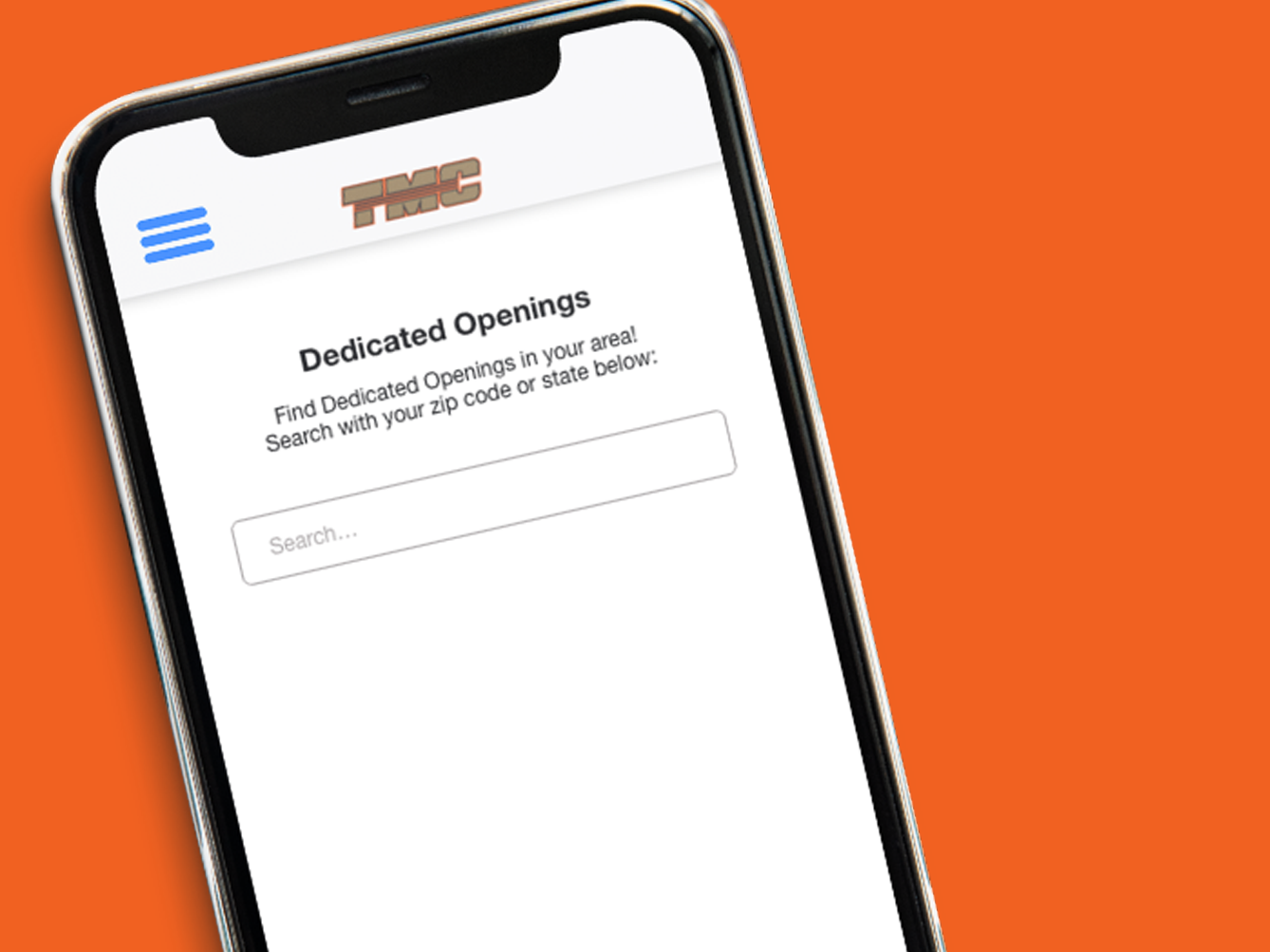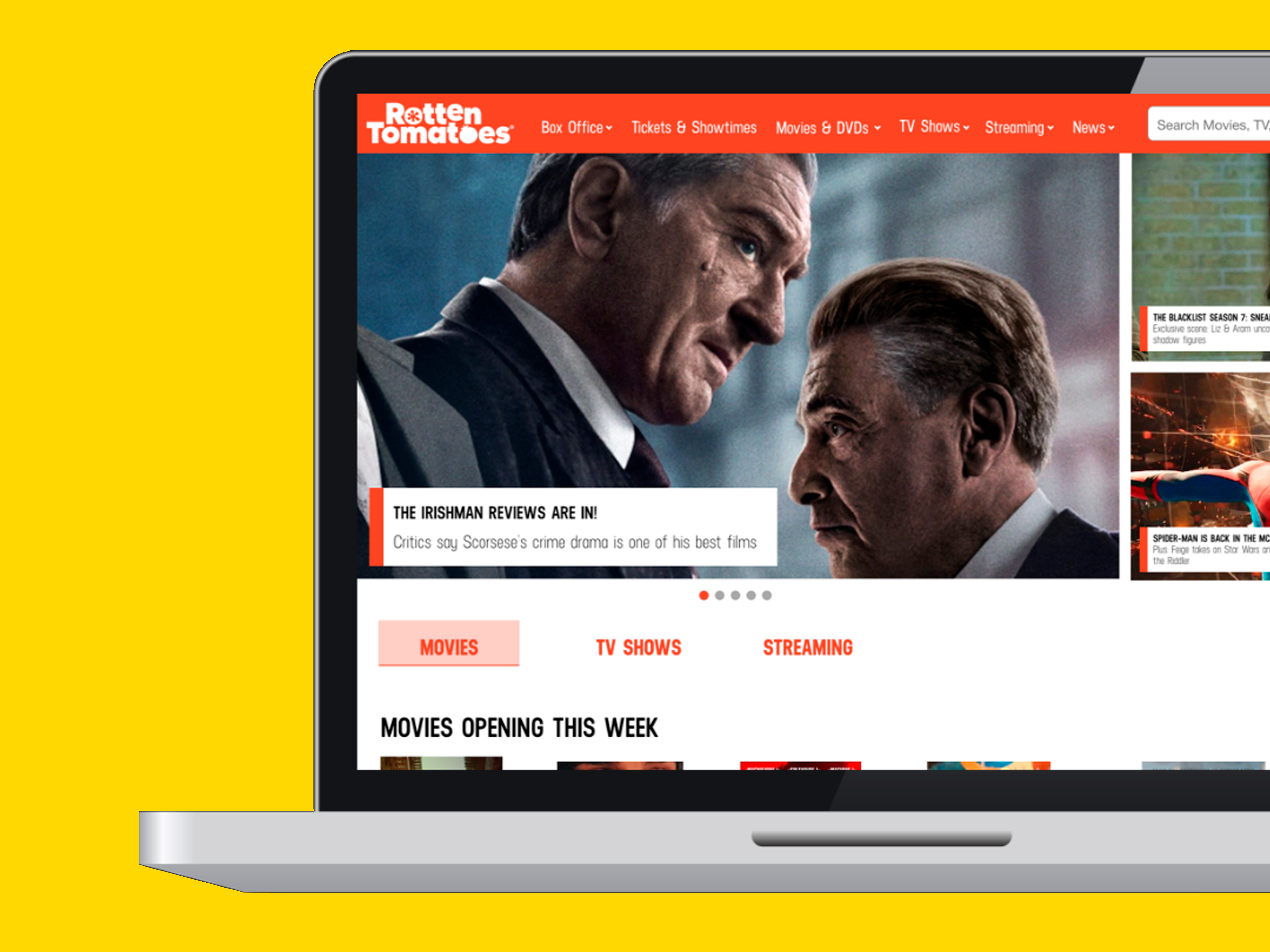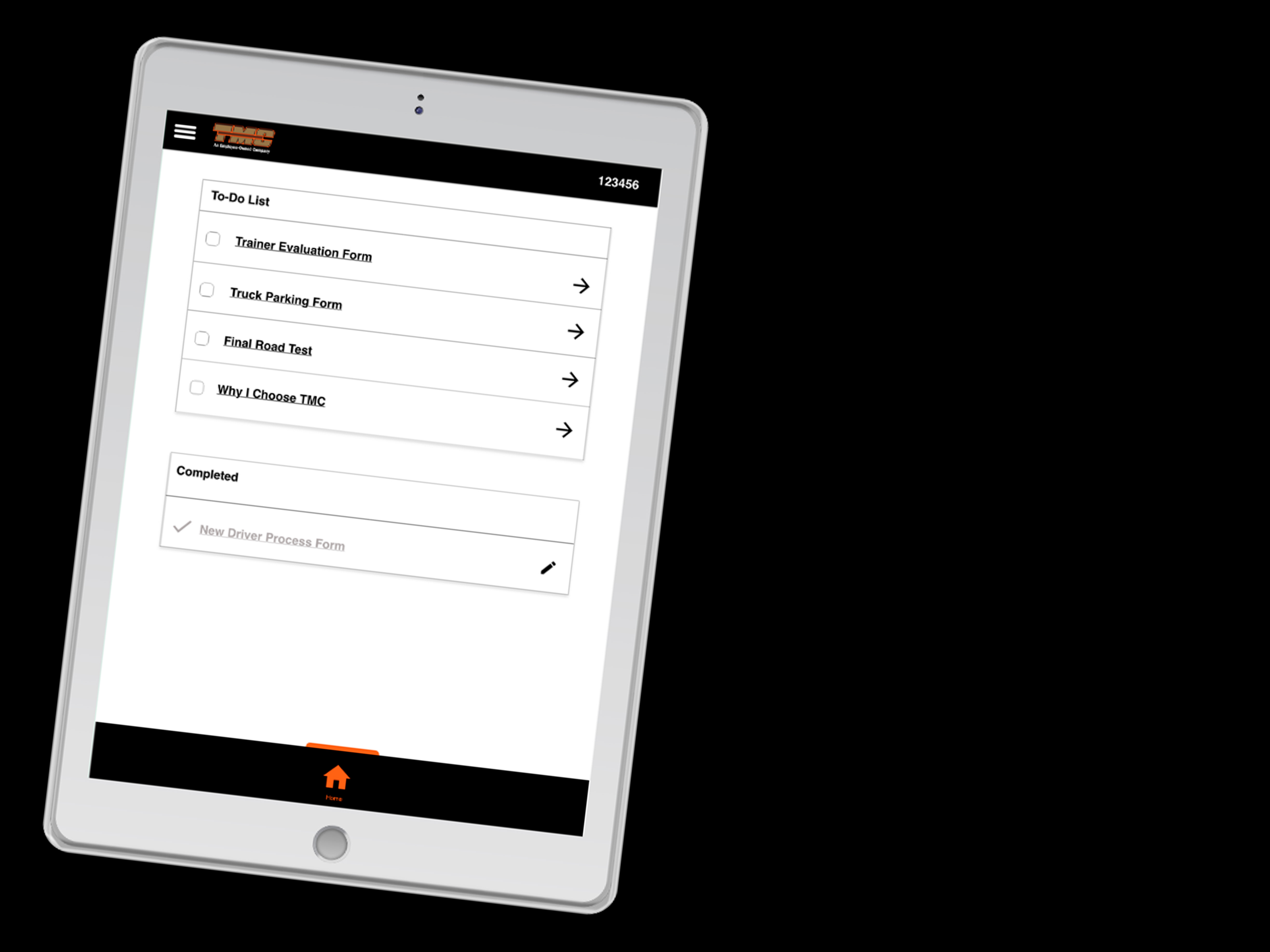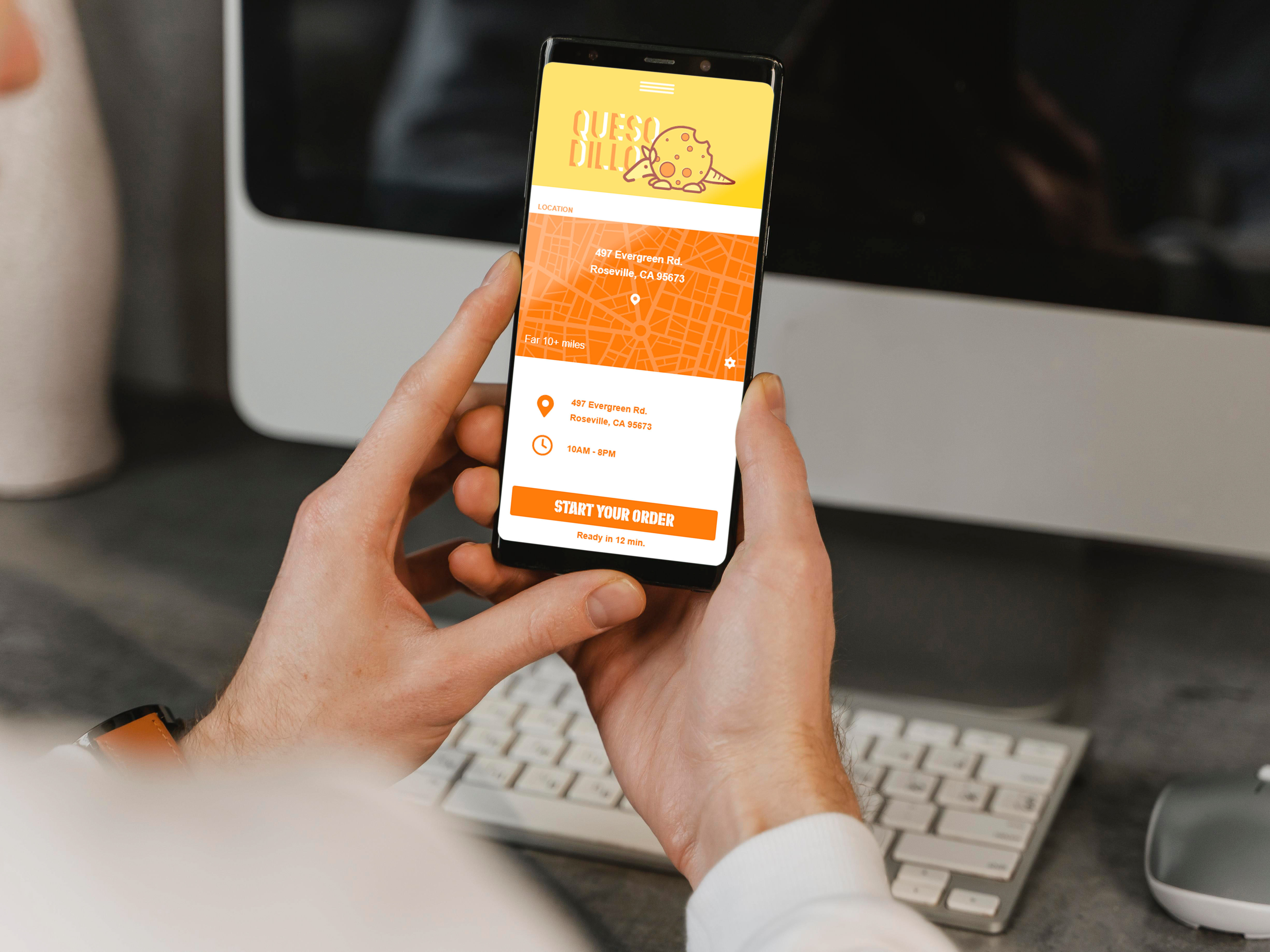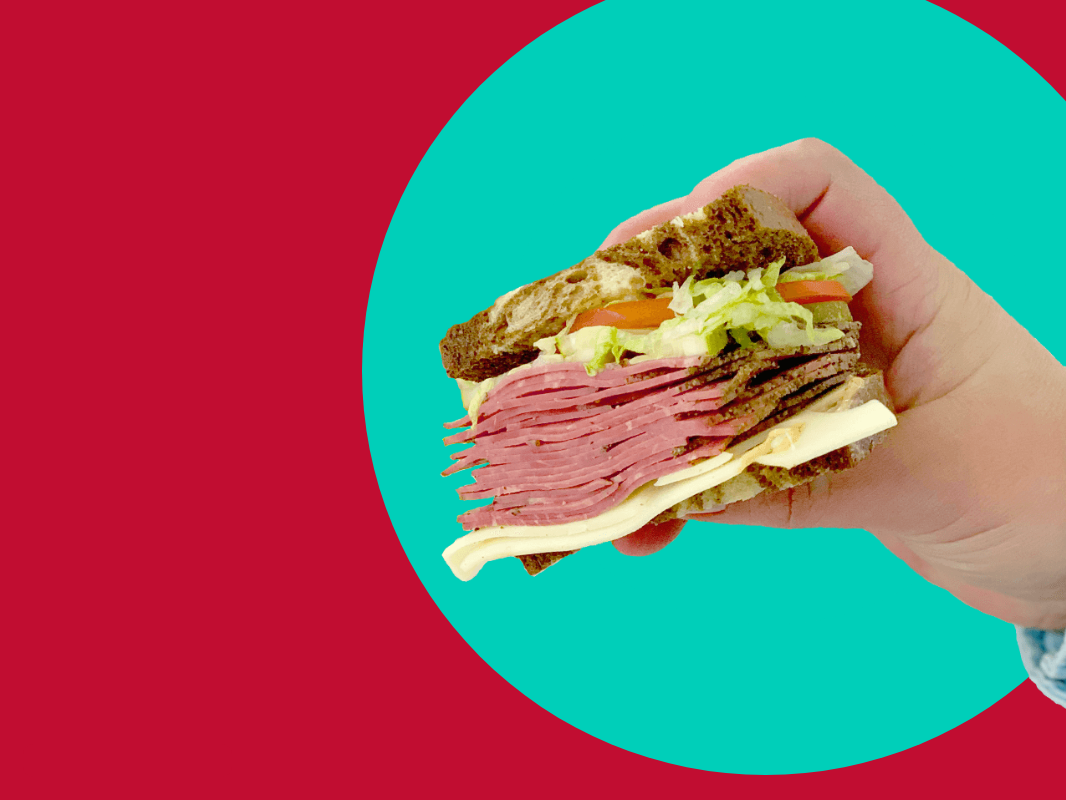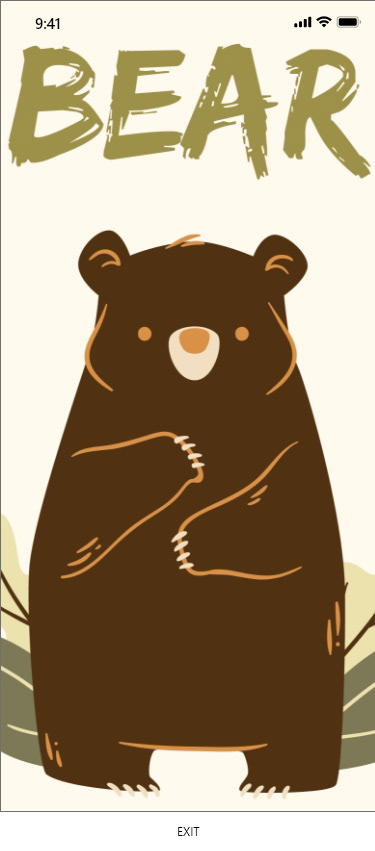
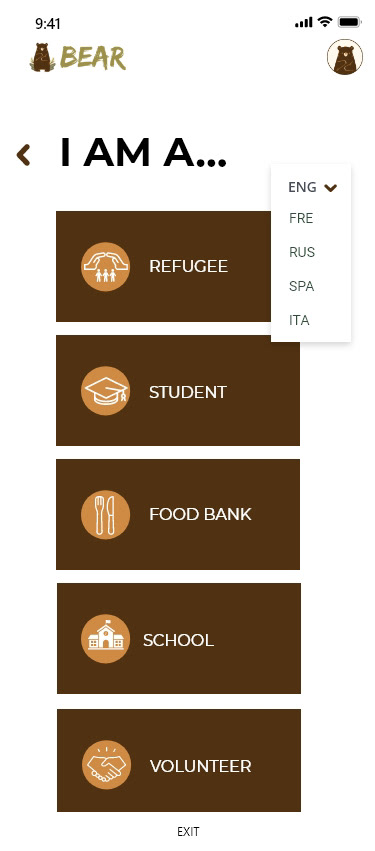
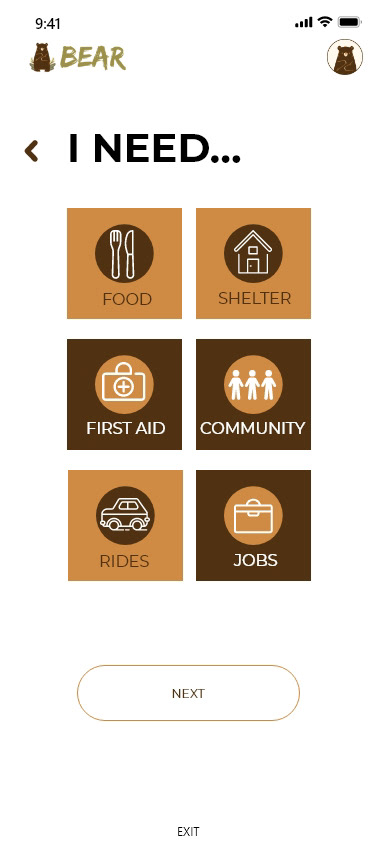
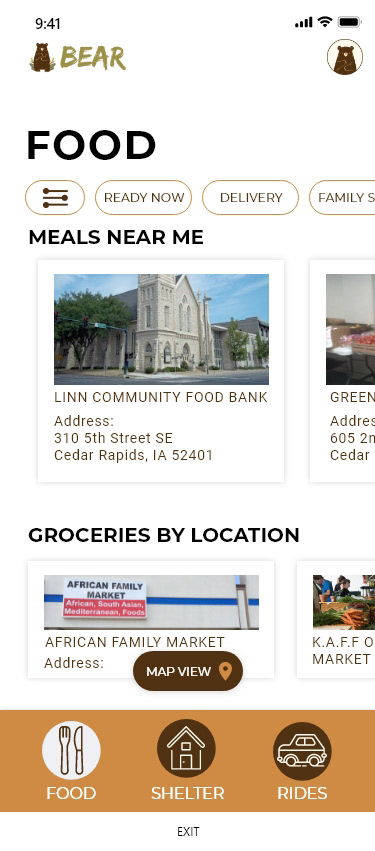
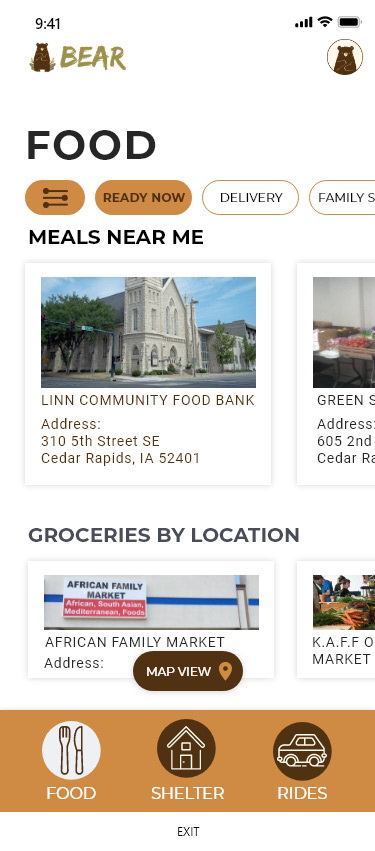

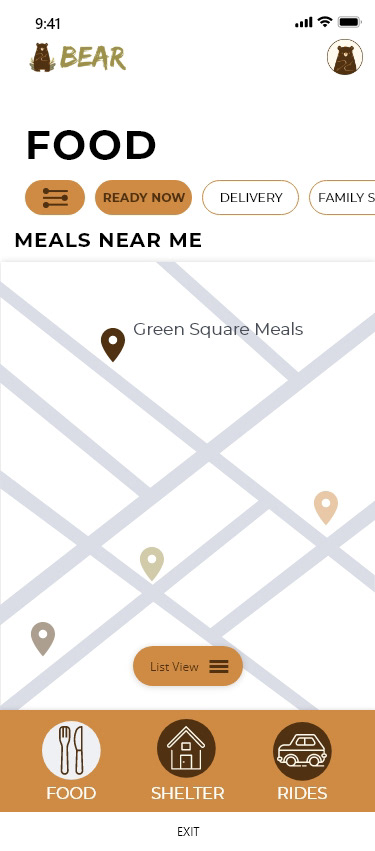
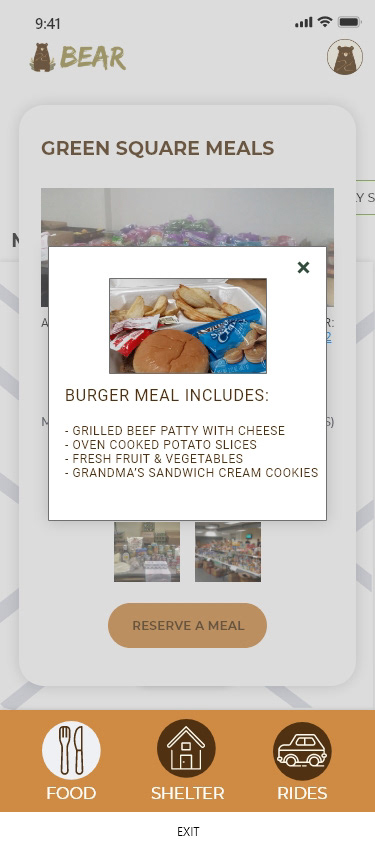
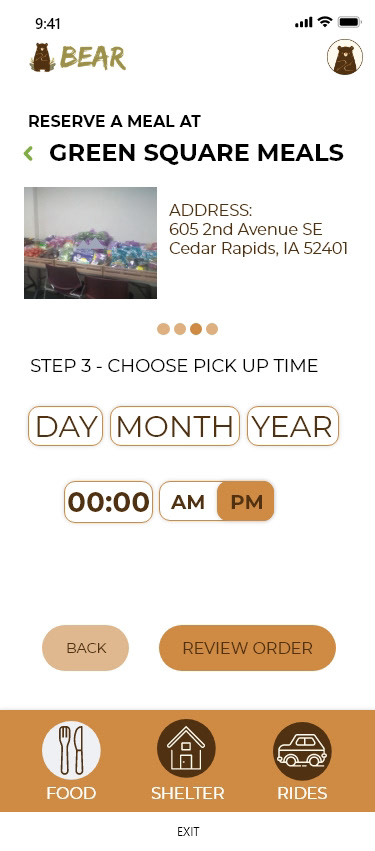

Project Details
Overview
BEAR is a mobile application prototype created to deliver critical resources - such as food, shelter, transportation, and employment - to people in need. Designed with anonymity, accessibility, and immediacy in mind, BEAR ensures that individuals can access help without stigma, especially during the times of crisis or transition.
The Problem
How can we bring resources such as food, shelter, transportation, and job opportunities to people in need - quickly, respectfully, and discreetly?
Many individuals experiencing hardship are often unaware of available support or feel relucant to seek help due to stigma. In emergencies, such as natural disasters or sudden displacement, this problem is magnified by urgency and lack of centralized information.
The Solution
BEAR is designed to act as a centralized resource hub, discreetly connecting users with life essentials through simple mobile interface.
Key features include:
- Anonymity by design - the name "BEAR" intentionally conceals the app's purpose to protect user privacy
- Location-based resource discovery
- Emergency and disaster-relief support integration
- Future expansion plans to web and community-based kiosks in high-traffic areas
My Role
As a member of the design team, I contributed to:
- User research and stakeholder interviews
- High-fidelity wireframing and UI design
- Interactive prototyping and iteration based on feedback
- Design refinement for mobile accessibility and clarity
Tools Used: Figma, Adobe XD
Team Setting: Master's Thesis Group Project
Recognition: Place Top 10 in the Adobe Creative Jam competition
User Research & Key Insights
Interviews and usability testing surfaced critical insights:
- Privacy is non-negotiable. Many participants, particularly refugees and student expressed concern about being seen as "in need"
- Clarity and speed matter. In high-stress situations (like natural disasters), users need intuitive navigation and instant access to services.
- Multimodal access is essential. User want the flexibility to access services on mobile, web, or in public spaces via kiosks.
Design Priorities
- Discretion: A neutral app name and clean, non-stigmatizing interface
- Efficiency: Simplified flows to connect users with resources in 2-3 taps
- Scalability: Architecture designed to support local, regional, and national crises
- Multilingual Considerations: Prepared to support for refugees communities
The Final Product
BEAR's mobile prototype includes:
- A home dashboard offering immediate access to resources by category
- A map view showing nearby food banks, shelters, job listings, and transportation options
- A request help feature allowing users to ask for specific assistance anonymously
- A profile system (optional) to receive personalized resource alerts based on location or situation
Impact & Recognition
- Recognized in the Top 10 of the Adobe Creative Jam competition
- Highlighted as a model for designing with dignity and empathy
- Developed a roadmap for future development via web and kiosks in underserved communities
What's Next
The vision for BEAR extends beyond the prototype:
- Collaborate with local nonprofits and disaster relief agencies for real-world pilot testing
- Develop a multilingual, kiosks-based version to reach non-digital users
- Expand the platform nationally to support a wider range of communities in need

